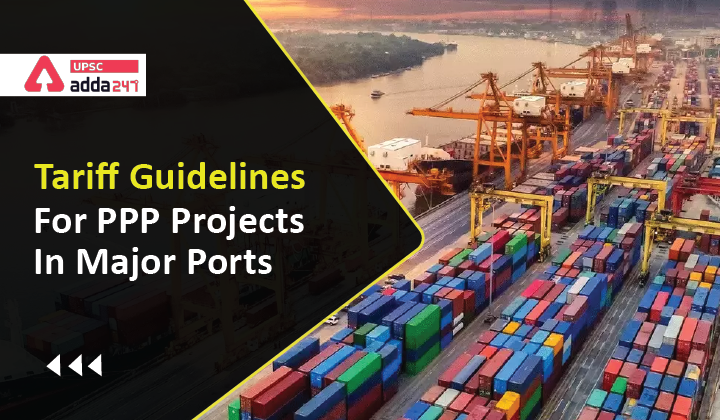Table of Contents
Tariff guidelines for PPP projects in Major Ports: Relevance
- GS 3: Infrastructure: Energy, Ports, Roads, Airports, Railways etc.
Tariff guidelines for PPP projects in Major Ports: Context
- Recently, Ministry of Shipping has announced the Tariff Guidelines, 2021 for PPP projects in Major Ports to make the major ports more competitive.
Tariff guidelines for PPP projects in Major Ports Key points
- The need for new guidelines arose consequent upon the new Major Port Authority Act,2021 coming inro force from November 2021.
- In the new Act, the provision of the erstwhile Tariff Authority for Major Ports (TAMP) stands abolished.
- The Guidelines allow the concessionaires at Major Ports to set tariffs as per market dynamics.
- Currently, Major Port’s PPP concessionaires handle around 50% of the total traffic handled by all the Major Ports in India.
- PPP concessionaires at Major Ports were constrained to operate under the stipulations of these guidelines (by TAMP) whereas private operators/PPP concessionaires at non-major ports were free to charge tariff as per market conditions.
Tariff guidelines for PPP projects in Major Ports: Key guidelines
- These new guidelines will be applicable for future PPP projects including the projects which are currently under the bidding stage.
- Government mandated concessions in tariff for trans-shipment and coastal shipping shall continue to apply to all PPP future Concessionaires.
- In fact, the government has gone a step further and made further concessions to promote trans-shipment and coastal shipping. The royalty payable for trans-shipment cargo will now be 0 times (from 1.5 times earlier) the normal container.
- Similarly, for the coastal cargo, the concessionaire has to pay only 40% of the royalty payable for foreign cargo (from 60% earlier) in accordance with coastal concession policy of the government.
- For transparency, the tariffs so fixed are to be hosted on the website of the concessionaire.
Tariff guidelines for PPP projects in Major Ports: Benefits of the guidelines
- The biggest benefit of transition to market linked tariff is that a level playing field will be provided to the PPP concessionaires at Major Ports to compete with private ports.
- These guidelines will usher in an era of market economy for the sector and go a long way in making the Major Ports competitive.
- Moreover, the market linked tariff guidelines will also be a step towards good governance.
Also Read:





 TSPSC Group 1 Question Paper 2024, Downl...
TSPSC Group 1 Question Paper 2024, Downl...
 TSPSC Group 1 Answer key 2024 Out, Downl...
TSPSC Group 1 Answer key 2024 Out, Downl...
 UPSC Prelims 2024 Question Paper, Downlo...
UPSC Prelims 2024 Question Paper, Downlo...





